UMong Temple “Jungle Temple in The City”
Umong temple the unique historical temple. Well worth a visit. If you think all Wats are the same this will prove you wrong.

Explore the historical and serene Wat Umong, also known as the Jungle Temple, a unique and tranquil escape nestled in the lush greenery of Chiang Mai.
A Hidden Gem in the City
Wat Umong (Wat UMong Maha Therachan), one of Chiang Mai’s must-see attractions, offers a peaceful retreat from the bustling city. Located in a forested area near Suthep-Pui National Park, this ancient temple dates back to the 14th century and is believed to have been founded by King Mangrai to accommodate forest monks from Sri Lanka. The temple’s serene atmosphere, surrounded by towering trees and cool air, makes it an ideal place for meditation and relaxation.
The Unique Tunnel System
The tunnel system at Wat Umong is a marvel of ancient architecture. Constructed in the late 14th century by King Ku Na, these tunnels were designed for meditation, providing a quiet and secluded space for monks. Walking through these dimly lit passageways, you can sense the spiritual energy that has been preserved for centuries. The walls of the tunnels were once adorned with ancient murals, some of which depicted scenes from Buddhist scriptures, although many have now faded.
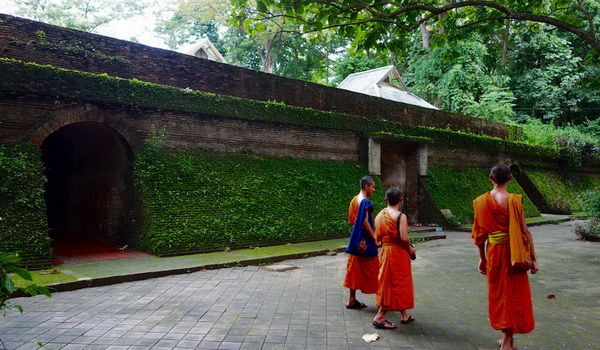
Lush Grounds and Serene Environment
Wat Umong’s temple grounds are a sanctuary of natural beauty. The 700-year-old Chedi, covered in moss and ferns during the rainy season, stands as a testament to the temple’s enduring legacy. The gardens are filled with various plant species, creating a tranquil environment for meditation and reflection. The temple also features a serene lake, where visitors can relax, feed the fish, and enjoy the peaceful surroundings. The area is home to tame deer, birds, and butterflies, making it a delightful spot for nature lovers.
Art and Cultural Richness
Wat Umong is not just about its tunnels and natural beauty. The temple is a repository of ancient art and culture. The murals inside the tunnels, though faded, are a testament to the artistic skills of the past, depicting Buddhist teachings and local folklore. The temple grounds also feature various statues and relics, including the Asokan Pillar replica and several ancient Buddha statues. These artifacts offer a glimpse into the cultural and spiritual heritage of Chiang Mai, making Wat Umong a must-visit for art lovers.

Influence of Buddhadhasa Bhikkhu
A strong influence on the temple has been the Buddhist philosophy of the late Buddhadhasa Bhikkhu, one of Thailand’s most celebrated 20th-century monks. His statue stands on an islet in the lake to the south of the chedi. Buddhadhasa Bhikkhu favored the natural environment of the forest over human construction, resulting in the modest temple buildings being surrounded by trees.
Monastic Life and Additional Attractions
Wat Umong is a living monastery where monks continue to practice and teach Buddhism. Visitors have the opportunity to observe and even participate in monastic life, gaining insights into Buddhist practices and teachings. The temple also houses a Buddhist museum, a “spiritual theater” with murals depicting Buddhist wisdom, and a library. The open-air zoo, connected to the temple compound, features an inner fenced area with kuti (monks’ living quarters) in the classic forest tradition.
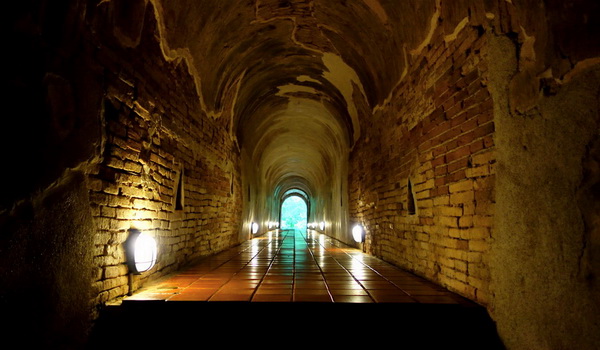
The temple grounds also extend to cover an open zoo on the side of the mountain. The front entrance lies up a short lane on the south side of the temple.
The zoo has an inner fenced area connected to the main temple compound by a small back gate in the west fence. This inner area contains kuti for monks in the classic forest tradition.
Tame deer wander the park and the park sanctuary is a good site for bird watching.
There is a pool nearby. The lake is peaceful and you can sit and relax and feed the birds and fish. You can buy food for a small amount and its really worth it to see these fish move to the surface. The spot of this place is surounded by big trees, butterflies and the sound of birds and roosters.
Visiting Wat Umong is a journey into the heart of Chiang Mai’s artistic and spiritual heritage. Whether you’re exploring on a day tour or spending a half-day at the temple, the serene environment and rich history make it a must-see attraction. Experience the unique blend of history, art, and nature that Wat Umong has to offer.
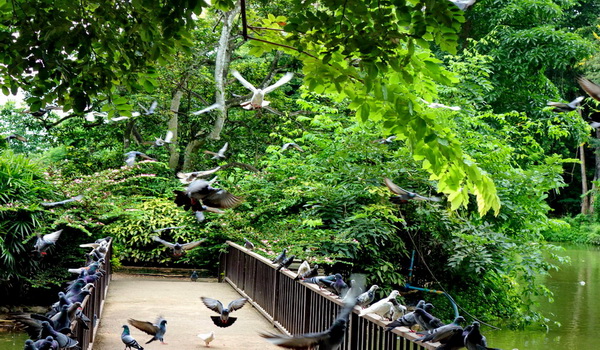
How to get to the Umong Temple
The Wat Umong is located just West of Chiang Mai city near Doi Suthep mountain. The temple is found about 1,500 meters South of Suthep road, just West of the Chiang Mai outer ring road. You can get there by private tour, taxi, tuk tuk, songthaew or samlor. Since the temple is a bit out of the way, it can be difficult to find a ride for the return trip, so it would be advisable to book a round trip and have the driver wait.
The most comfortable way to get there is by private tour. Most hotels can book one for you or contact travel agency in Chiang Mai to book car rental with driver for your group.
Opening hours and Entrance fee : The temple opens daily from 6 am until 5 pm. Admission is free.
Note : Not accessible for wheelchair user
Our services :
- Private tour to Umong Temple
- Package tour to Umong Temple (Private group)
- Offering to monks in the mornings and visit doi suthep temple (Join in tour)
- Chiang Mai evening tour : visit wat Umong and Doi Suthep (Join in tour)
UMong Temple Map
Meditation Program
Message from us : For these meditation programs are not a commercial business ( No any commission ). About meditation expenses at temple be like a donation. We would like only to give information for our customers about the place for making Buddhist meditation in Chiangmai. So, you could contact by yourself. But it’s not comfortable, we could help you for free service to contact with any places where you prefer and we have transfer service to that place which is not too expensive.
| TELEPHONE | 0-5327-7248 call only from 8.30 a.m. to 4 p.m. |
| E-MAIL/WEBSITE | http://www.watumong.org/ |
| DIRECTIONS | Located 3.5 km west of Chiang Mai. |
| MEDITATION SYSTEM | Anapanasati, similar to teaching at Suan Mokkh. One is free to use one’s own meditation techniques. |
| TEACHING METHOD | Teachers are available for questions. Talks in English are given every Sunday 3-6 p.m. at the Chinese Pavillion near the pond. A library/museum has many books in English and other foreign languages. |
| TEACHERS | Phra Khru Sukhandasila, abbot (Thai; age 56) Phra Santitthito (Santi) (German; age 50) is no longer at Wat Umong; he now takes care of a large forest center in Australia as abbot and residen teacher Wat Buddhadhamma, Ten Mile Hollow, Wisemans Ferry, New South Wales. |
| LANGUAGE | One should be able to speak some Thai. Other senior monks, including the abbot, speak a little English. |
| DESCRIPTION | Peaceful, wooded grounds of 37.5 rai (15 acres). You can feed the fish, turtles, and ducks in a large pond. “Talking trees” have words of wisdom in Thai and English. The wat is famous for its ancient tunnels and large stupa. Other attractions include a Buddha field of broken sculpture, a fasting Bodhisatva, a Spiritual Theatre of paintings similar to those at Suan Mokkh, reproductions of ancient Buddhist sculpture of India, and a library-museum. This last building offers many books on Buddhism and other philosophies as well as a collection of historic objects and Buddhist art. |
| SIZE | monks 45-75, novices about 10, nuns about 8, laypeople about 10 |
| DAILY ROUTINE | A bell is rung at 4 a.m. Monks and novices are encouraged (and laypeople welcome) to attend chanting at 430 a.m. and 5 p.m. Monks and novices go on pindabat after morning chanting, then eat together in a wooden sala. Because discipline, practice, and schedule are left up to each person for the most part, self-motivation is especially important. Laypeople on a short visit can follow 5 precepts; longer-term visitors should observe 8 precepts. |
| FOOD | Monks eat once or twice a day from food collected on pindabat. Nuns normally cook their own food. Laypeople can also arrange meals at nearby shops or take from monk’s leftovers. |
| ACCOMMODATIONS | Individual kutis in separate areas for monks/novices,nuns, and laypeople. Kutis, somewhat closely spaced, have screens and electricity; some also have attached Thai-style bathrooms (Asian- and some western-style toilets) and running water. |
| WRITE IN ADVANCE | Yes, write or enquire well in advance. Only a small number of kutis are available for laypeople. |
| OTHER INFORMATION | The monastery, one of the oldest in the Chiang Mai area, may date as far back as 1300 A.D. Legend tells that a king built the brick-lined tunnels for a clairvoyant but sometimes eccentric monk named Thera Jan; paintings dated to about 1380 once decorated the walls. You can enter the tunnels to see the small shrines inside (a flashlight is useful). The adjacent stupa was constructed about 1520 over an earlier stupa (1400-1550). The monastery eventually fell into disuse, though Japanese troops were said to garrison here during WW II. Since 1948, the Thai prince Jao Chun Sirorot, now in his 90s, has been active in rebuilding and reestablishing the monastery. In 1949 he invited Buddhadasa Bhikkhu (founder of Suan Mokkh in southern Thailand) to come and live here. Duties kept Buddhadasa Bhikkhu from coming. Instead he sent Ajahn Pannananda and other monks to help set up and run Wat Umong. |






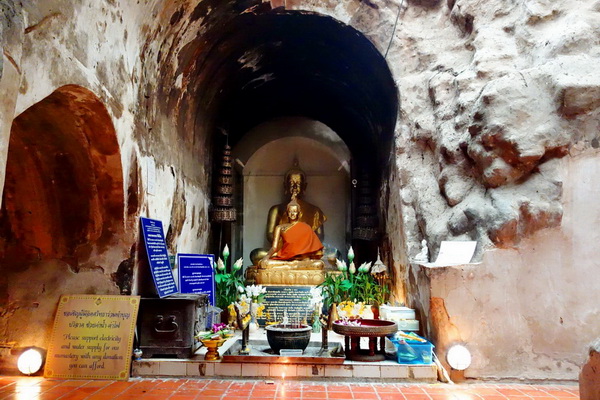
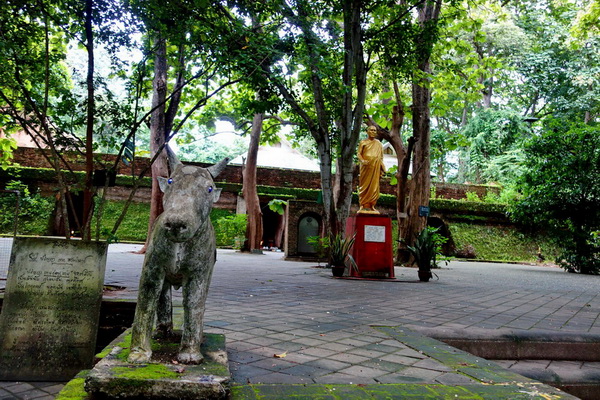
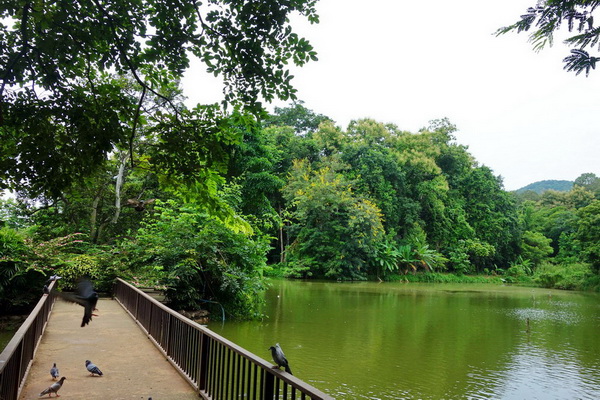
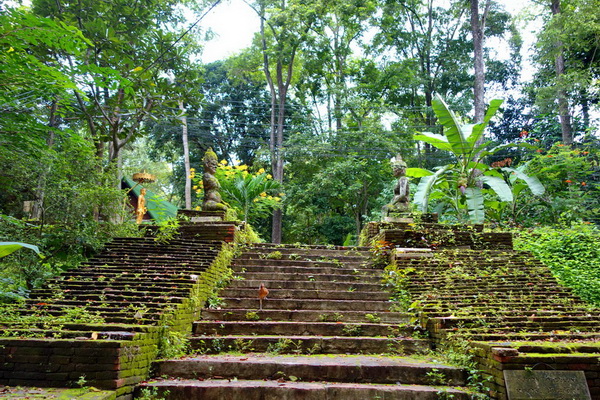

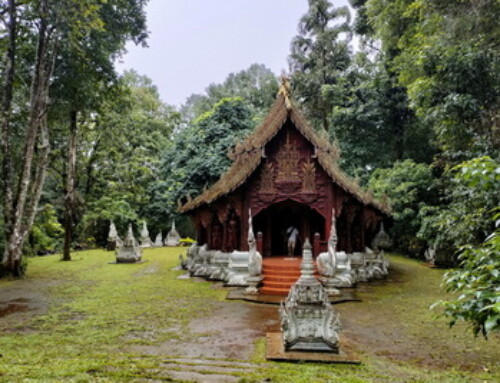



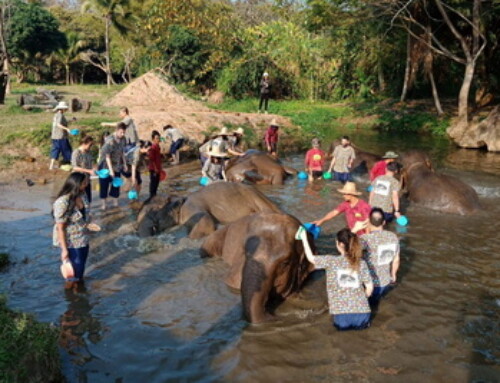
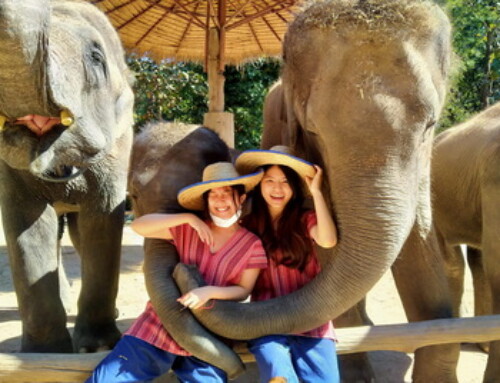



Leave A Comment